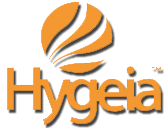
With your breastfeeding journey on the horizon, researching breast pump options is naturally going to be on your list of to-dos.The array of options available can be daunting for new mothers, though. Understanding the distinctions between each type is crucial for a successful pump choice.
It’s common to feel overwhelmed when faced with choices ranging from single, manual pumps to double, wearable pumps. This guide aims to demystify the options, providing clarity on the benefits and appropriate uses for each. By exploring the differences mothers can make informed decisions.
Let’s ditch the jargon and dive into what you really need to know about hospital-grade, electric, manual, single, double, and those awesome wearable pumps everyone’s talking about. We’ll get you sorted, so you can focus on what matters most: your little one.
Hospital-Grade vs. Personal-Use Pumps: Power and Efficiency
Hospital-grade pumps are often considered the gold standard, and for good reason. These pumps are designed for frequent, long-term use, offering powerful suction and adjustable settings to maximize milk output. They’re ideal for moms who need to establish or maintain a strong milk supply, such as those with premature babies or those returning to work full-time. While they come with a higher price tag, their efficiency can be invaluable.
Personal-use pumps, on the other hand, are designed for less frequent pumping. They’re typically more portable and affordable, making them a good option for moms who pump occasionally, need a backup pump. This is also an option if your insurance cannot cover a hospital-grade pump and it is not in your budget to spring for one out of pocket.
Electric vs. Manual Pumps: Convenience vs. Control
Electric pumps offer the ultimate convenience, often allowing you to pump both breasts simultaneously with minimal effort. They’re perfect for moms who need to pump regularly and efficiently. Manual pumps, however, require hand operation and offer more control over suction and speed. They’re a good choice for occasional pumping or when portability is paramount.
Single vs. Double Pumps: Time-Saving Efficiency
Double pumps allow you to express milk from both breasts simultaneously, significantly reducing pumping time. This can be a game-changer for busy moms who need to pump frequently. Single pumps, while more affordable, require you to pump one breast at a time, doubling the amount of time you spend pumping.
Wearable Pumps: Freedom and Flexibility
Wearable pumps are the latest innovation in breast pump technology, offering unparalleled freedom and flexibility. These hands-free, cordless pumps fit discreetly inside your bra, allowing you to pump while on the go. They’re perfect for busy moms who need to multitask or those who want to pump discreetly in public.
Understanding Insurance Coverage for Your Breast Pump
One of the most significant factors in choosing a breast pump is affordability. Thanks to the Affordable Care Act, many insurance plans cover the cost of a breast pump. However, coverage can vary depending on your specific plan. It’s crucial to contact your insurance provider to understand your coverage details.
Some plans may cover hospital-grade pumps, while others may only cover personal-use pumps. At Hygeia Health, we specialize in helping moms navigate this process and maximize their insurance benefits. We can assist in determining your eligibility and streamline the process of obtaining a 100% insurance-covered breast pump.
Choosing the Right Pump for You
Ultimately, the best breast pump is the one that meets your individual needs and lifestyle. Consider factors such as:
Frequency of pumping: Frequent pumping calls for hospital grade or high quality electric double pumps.
Budget: Personal-use or manual pumps are more budget friendly, but many insurance policies will cover the cost of a hospital grade and top of the line pumps.
Lifestyle: Wearable pumps are great for busy, on the go moms.
Milk supply needs: Hospital grade pumps are great for establishing supply.
Hygeia knows every mom deserves access to the best tools to support their breastfeeding journey. That’s why we’re here to help. By completing a simple form we can help you see if you qualify for a hospital-grade breast pump 100% covered by your insurance policy.
We’re here to support you every step of the way, from finding the right pump to navigating insurance coverage. You’ve got this, mama!

Juggling motherhood is a marathon as it is so adding exercise to the mix, especially while breastfeeding? That can feel like an Olympic feat! But we’re here to tell you that exercise while breastfeeding is completely doable with benefits to both you and your baby.
Don’t worry. You’re not alone if you’re wondering how to balance staying active with maintaining your milk supply and comfort. In this article we will dive into how moderate exercise can actually benefit your breastfeeding journey, the crucial role of proper support and clothing, and how to seamlessly incorporate pumping into your fitness routine. We’ll get you feeling confident and empowered to prioritize your well-being while still providing the best for your little one.
Will Exercise Affect My Milk Supply?
One of the biggest concerns I hear from moms is, “Will exercise affect my milk supply?” It’s a valid question! The good news is, moderate exercise is generally considered safe and beneficial for breastfeeding moms. In fact, it can even boost your mood and energy levels – something we all desperately need!
However, there are a few things to keep in mind:
Intensity Matters: Intense or prolonged exercise can sometimes temporarily decrease milk supply due to the buildup of lactic acid.
Hydration is Key: Drink plenty of water before, during, and after your workout. Think of it this way, you are hydrating yourself, and your milk supply.
Nutrition Matters Too: Make sure you’re eating enough calories to support both your activity level and your milk production. A well-balanced diet rich in protein, fruits, and vegetables is key.
Finding the Right Support and Clothing
Now, let’s talk about support. Finding the right sports bra is crucial for comfort and support during exercise.
Supportive, Not Restrictive: A good sports bra should be supportive but not too tight. You want to avoid anything that restricts blood flow or puts pressure on your milk ducts.
Breathable Fabrics: Look for breathable fabrics that wick away moisture.
Easy Access: Consider a sports bra with easy access for pumping or nursing, especially if you plan to exercise soon after feeding your little one.
When it comes to clothing, comfort is king!
Loose and Breathable: Choose loose-fitting, breathable fabrics that allow you to move freely.
Nursing-Friendly Options: Look for tops that offer easy access for nursing or pumping.
Supportive Shoes: And, of course, don’t forget comfortable shoes that provide good support.
Pumping and Planning
Speaking of pumping, if you’re planning to exercise away from your baby, make sure to pump before or after your workout to maintain your milk supply.
Hygeia Health offers hospital-grade breast pumps that are designed for efficient and comfortable pumping.
Our pumps are designed to mimic a baby’s natural suckling, and are portable, which is perfect for busy, active moms!
We also understand that getting a high-quality pump can be a financial burden, which is why we’re passionate about helping moms get their pumps covered 100% through insurance.
Get Your Free Breast Pump!
We believe every mom deserves access to the best tools to support their breastfeeding journey. That’s why we’re making it easier than ever to get a free breast pump through insurance. If you’re ready to prioritize your health and well-being while providing the best for your baby, we’re here to help.
Ready to take the next step? Apply today to see if you qualify for a free Hygeia Health breast pump. We’re here to support you every step of the way, from finding the right pump to navigating insurance coverage. You’ve got this, mama!
At Hygeia Health, we understand the challenges of new motherhood. We’re committed to supporting breastfeeding moms by providing them with reliable breast pumps. Moms can get a 100% insurance-covered breast pump and Hygeia can help. See if you qualify!
Cluster feeding is a temporary phase. Remember that it’s a normal part of newborn development and a crucial step in establishing your milk supply. Be patient, take care of yourself, and enjoy this special time with your baby.

Feeling like you’re living on the couch, with a baby constantly at your breast? Take a deep breath: it’s probably cluster feeding, a perfectly normal (though intense) part of newborn life. Understanding this phase is key to managing this phase and making life much easier. Let’s explore cluster feeding and how a breast pump can offer support.
What is Cluster Feeding?
Cluster feeding is when a baby nurses very frequently over a short period, typically in the evenings. They might nurse every 30 minutes to an hour for several hours straight. This can feel like constant feeding, and it’s perfectly normal. It’s not a sign of low milk supply. Instead, it’s a natural behavior and is known to assist in several key areas of parenting a newborn including:
Increase Milk Supply: Frequent nursing signals your body to produce more milk, especially during the crucial early weeks.
Settle Baby for Sleep: Cluster feeding can help your baby feel full and content, leading to longer stretches of sleep.
Comfort and Bonding: Nursing provides comfort and strengthens the bond between you and your baby.
Why Does Cluster Feeding Happen?
Babies will cluster feed for various reasons, but trust that your body and trust the your baby’s instincts. Some reasons for cluster feeding include:
Newborn Growth Spurts: Babies experience rapid growth in the early weeks. Cluster feeding helps them get the extra calories they need.
Evening Fussiness: Many babies are naturally fussier in the evenings. The frequent feeding can soothe them.
Milk Supply Regulation: Your body is still learning how much milk to produce. Cluster feeding helps fine-tune the process.
How to Manage Cluster Feeding:
Prepare for Long Sessions: Clear your schedule and create a comfortable space. Have snacks, drinks, and entertainment within reach.
Embrace the Cuddles: This is a great opportunity for bonding. Enjoy the close contact with your baby.
Ask for Help: Don’t be afraid to ask your partner, family, or friends for help with household chores or other tasks.
Stay Hydrated and Nourished: Drink plenty of water and eat healthy meals. This will help you maintain your energy.
Rest When You Can: Sleep when your baby sleeps. You’ll hear this phrase often, and it’s easy to feel the need to do everything but sleep during baby’s napping windows. Even if it’s just for short naps, your rest is vital, so don’t pass it up completely.
Use a Breast Pump for Relief: If your breasts become overly full or sore, a breast pump can offer relief. It can also allow your partner to give a bottle of expressed milk, giving you a break.
When to Seek Help:
While cluster feeding is normal, there are times when you should seek professional help:
Severe Nipple Pain: If you experience intense nipple pain, consult a lactation consultant.
Signs of Dehydration: If your baby shows signs of dehydration (fewer wet diapers, lethargy), contact your pediatrician.
Persistent Fussiness: If your baby is consistently fussy and not gaining weight, consult your pediatrician.
How a Breast Pump Can Help:
A breast pump can be a valuable tool during cluster feeding.
Relief from Engorgement: Pumping can relieve discomfort from overly full breasts.
Building a Stash: Pumping can help you build a stash of expressed milk for when you need a break.
Partner Support: Your partner can help with feedings using pumped milk, giving you time to rest.
At Hygeia Health, we understand the challenges of new motherhood. We’re committed to supporting breastfeeding moms by providing them with reliable breast pumps. Moms can get a 100% insurance-covered breast pump and Hygeia can help. See if you qualify!
Cluster feeding is a temporary phase. Remember that it’s a normal part of newborn development and a crucial step in establishing your milk supply. Be patient, take care of yourself, and enjoy this special time with your baby.

Breastfeeding is a natural and beautiful way to nourish your baby. However, the idea of breastfeeding in public can feel daunting for many new moms. It’s understandable to feel nervous about potential judgment or discomfort. This post will offer practical tips to help you gain confidence and breastfeed comfortably wherever you are.
Start Small and Practice
Begin at Home: Practice breastfeeding in front of a mirror or with a trusted friend or family member. This can help you find comfortable positions and build your confidence.
Choose Familiar Places: Start by breastfeeding in places where you feel comfortable, like a friend’s house or a quiet coffee shop. Gradually expand to more public settings.
Practice Latching: Ensure your baby has a good latch. This minimizes discomfort and allows for efficient feeding, as well as efficient transitions between nursing and holding your baby.
Plan Ahead and Be Prepared
Dress for Success: Wear clothing that allows easy access for breastfeeding. Nursing tops, wrap dresses, and button-down shirts are great options.
Bring a Cover: A nursing cover can provide privacy if you prefer. However, don’t feel obligated to use one if you’re comfortable without it. Some babies even have a preference of having a cover or not.
Scout Locations: When going out, look for places with comfortable seating. If you prefer privacy, search out locations that have family restrooms or designated nursing areas.
Pack Essentials: Bring nursing pads, a burp cloth, and a water bottle to stay hydrated.
Manage Potential Concerns
Focus on Your Baby: Remember that breastfeeding is a natural and essential act. Your priority is feeding your baby.
Ignore Unwanted Attention: If you encounter negative comments or stares, try to ignore them. You have the right to feed your baby wherever you are.
Find Support: Connect with other breastfeeding moms online or in person. Sharing experiences and tips can boost your confidence.
Know Your Rights: Familiarize yourself with your state’s laws regarding breastfeeding in public. In most places, you have the right to breastfeed wherever you are legally allowed to be.
How a Breast Pump Can Help
If you’re struggling to grow comfortable with breastfeeding in public, a breast pump can be a valuable tool for building confidence. Pumping allows you to express milk and have it available for your baby if you find yourself in situation where you are not comfortable to breastfeed. Perhaps it’s because your baby is fussy, there is no comfortable seating, or the crowd is too large for your liking. Whatever the reason, having pumped milk for bottle feeding may bring relief in certain public situations.
Hygeia Health is committed to supporting the breastfeeding journey, which often requires feeding in public and on-the-go and utilizing pumped milk. A reliable breast pump can make a huge difference in your breastfeeding experience. But did you know you can get a 100% insurance-covered breast pump? Hygeia can help. See if you qualify!
Building confidence in public breastfeeding takes time and practice. Be patient with yourself, and remember that you’re doing a great job. You have the right to feed your baby wherever you are.

Many moms worry about not pumping a normal amount of breast milk particularly when they are dependent upon pumping. It’s easy to compare yourself to others, or to feel discouraged if you don’t see large volumes of milk. But the truth is, there’s a wide range of “normal” when it comes to pumping output. Let’s clear up some common misconceptions and help you understand what to expect.
The “Normal” Breast Milk Output Range is Wide
There’s no single number that defines a “good” pumping session or how “good” your overall supply is. Factors like your baby’s age, time of day, how often you pump, and your individual body all play a role. Some moms might consistently pump several ounces per session, while others might only get a fraction of that. Both can be perfectly normal.
Exclusively pumping mothers: Seeing between 2-4 ounces combined from both breasts during a pumping session every 2-3 hours is often considered the high end of the pumping spectrum and reserved for moms who exclusively pump.
Mothers primarily breastfeeding / pump occasionally: Seeing smaller amounts, sometimes as little as 0.5 to 2 ounces per session, is completely normal for a mother only occasionally pumping. This is no reflection of an overall low milk supply.
Pumped Amount Isn’t a Direct Measure of Supply
It’s important to understand that pump output doesn’t always reflect your total milk supply. Babies are often more efficient at removing milk than pumps. If your baby is gaining weight well and producing plenty of wet and dirty diapers, you’re likely making enough milk, even if your pump output seems low.
Factors Affecting Breast Milk Pumping Output
Baby’s Age: In the early weeks, when your milk supply is still establishing, you might pump smaller amounts. As your baby gets older and your supply regulates, you might see an increase.
Time of Day: Milk supply is often higher in the morning. You might notice a difference in output between morning and evening pumping sessions.
Pumping Frequency: The more often you pump, the more milk you’ll likely produce. Regular and frequent milk removal signals your body to make more milk.
Pump Type and Fit: A good quality pump with properly fitted flanges is essential. A poor fit can significantly reduce milk output.
Stress and Relaxation: Stress can inhibit milk flow. Try to relax and create a calm environment before and during pumping.
Hydration and Nutrition: Staying well-hydrated and eating a balanced diet supports milk production.
Common Misconceptions
It’s completely normal to have concerns over your milk supply or to question whether or not your body is doing “enough.” This is commonly spurred along by misconceptions that permeate the breastfeeding world. Let’s clear up some of these points of confusion.
“If I don’t pump a lot, I don’t have enough milk.”
This is a common misconception. As stated before, pumping output is not a direct indication of your overall milk supply.
“Everyone else pumps more than me.”
Social media can create a false sense of what’s “normal.” Remember that everyone’s body is different. Try following some accounts of certified lactation consultants or breastfeeding experts.
“I need to pump a full bottle every time.”
This is not always the case. Small, frequent pumping sessions can be just as effective as longer sessions.
What to Focus On
Try to focus on the things that indicate the state of your breastfeeding journey. These things will also help you know how to adjust and change.
Baby’s Cues: Pay attention to your baby’s hunger cues and feeding behaviors.
Weight Gain and Diaper Output: These are the best indicators of whether your baby is getting enough milk.
Consistency: Pump regularly and consistently to maintain your milk supply.
Proper Pump Fit: Ensure your pump flanges fit correctly.
How Hygeia Health Can Help:
A quality breast pump can make a significant difference in your pumping experience. At Hygeia Health, we’re dedicated to providing moms with reliable and effective breast pumps, which can make a huge difference in your breastfeeding journey, especially if you are pumping to maintain your milk supply.
Don’t miss out on the opportunity to get a 100% insurance-covered breast pump and make your breastfeeding journey smoother and more successful. Don’t let pumping output discourage you. Focus on your baby’s cues, and trust your body. Remember, you’re doing a great job!

Congratulations! You’ve reached the six-month mark in your breastfeeding journey. This is a huge accomplishment, and you and your baby have likely established a rhythm that works for you. But as your baby grows and develops, breastfeeding can change. This post will explore some common challenges and solutions for breastfeeding babies six months and older, and how a good breast pump can continue to support your journey.
Decreased Frequency of Feedings
As your baby starts solids, they may nurse less often. This is normal. Offer the breast before solids to ensure they are still getting the majority of their nutrition from breast milk. Continue to respond to their hunger cues, and don’t worry if the frequency changes.
Managing Distractions
Older babies are more aware of their surroundings. They might get distracted while nursing. Try breastfeeding in a quiet environment with minimal stimulation. You can also try nursing while your baby is sleepy or in a carrier.
Changes in Milk Supply
Your milk supply might adjust as your baby’s needs change. This is usually a natural process. Continue to nurse on demand and pump if needed to maintain your supply. If you have concerns about your milk supply, talk to a lactation consultant.
Returning to Work
If you’re returning to work, pumping becomes essential. Establish a pumping routine that mimics your baby’s feeding schedule. A good quality breast pump can make all the difference in maintaining your milk supply and making pumping at work more manageable.
Weaning
Some babies start to wean naturally around this age, while others continue to breastfeed for much longer. Follow your baby’s lead. If they are showing signs of weaning (like refusing the breast or being more interested in solids), respect their cues. If you want to continue breastfeeding, keep offering the breast and pumping as needed.
Teething
Teething can sometimes make breastfeeding uncomfortable. Offer your baby chilled teethers before nursing. If your baby is biting, gently break the suction and offer them a teether. Consistency is key.
Changes in Sleep Patterns
Sometimes, babies who previously slept well might start waking more frequently at night. This can be related to developmental leaps, teething, or simply wanting comfort. Offering the breast can be a soothing way to help them back to sleep.
The Importance of Continued Breastfeeding
Even as your baby explores solid foods, breast milk continues to provide essential nutrients, antibodies, and immune protection. The World Health Organization recommends breastfeeding until at least two years of age, or for as long as mother and baby desire.
How a Breast Pump Can Help:
A reliable breast pump can be invaluable for mothers breastfeeding older babies. It can help:
- Maintain milk supply, especially when separated from your baby
- Provide expressed milk for when you’re away or if your baby needs extra
- Relieve engorgement
- Support your breastfeeding journey as your baby grows and changes
At Hygeia Health, we understand the importance of having a quality breast pump. All moms should have access to one, and that’s why we help moms get a 100% insurance-covered breast pump. A reliable breast pump can make a huge difference in your breastfeeding experience, especially as your baby gets older and your needs change.
Breastfeeding beyond six months is a remarkable achievement. While there may be challenges, remember that you and your baby are a team. Trust your instincts, seek support when needed, and enjoy this special time.






